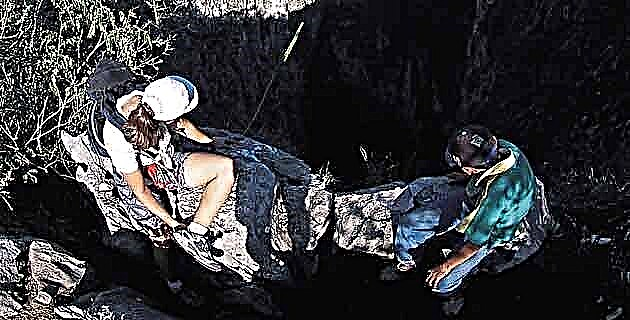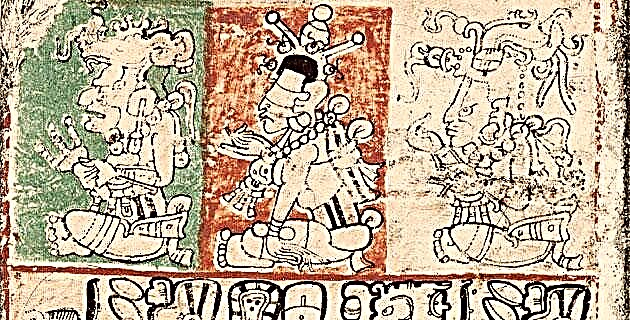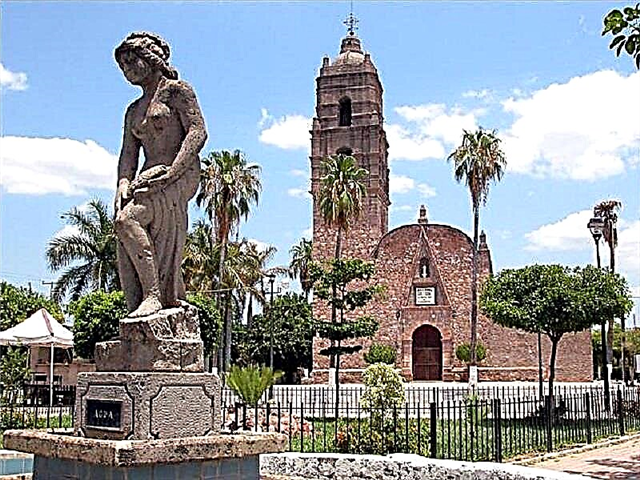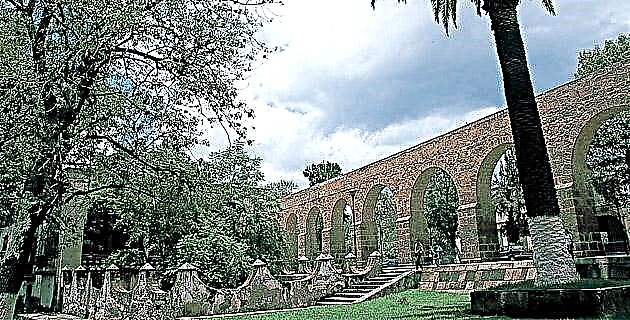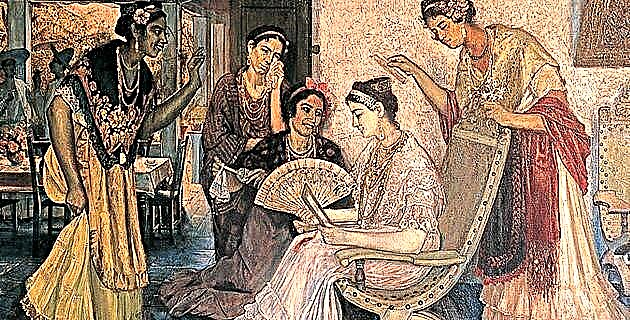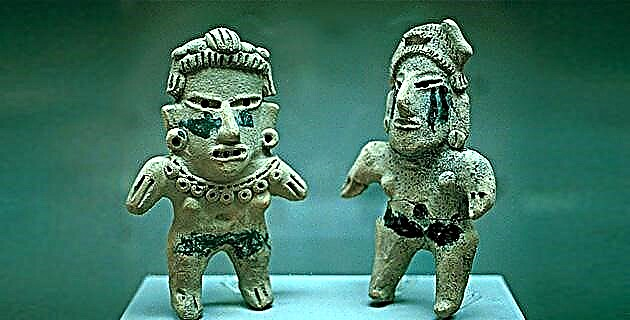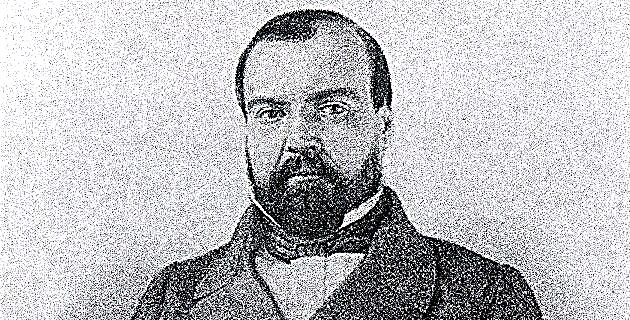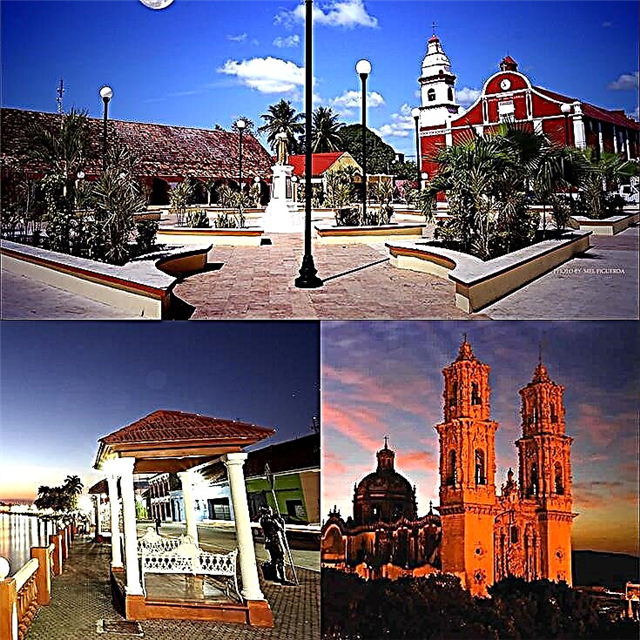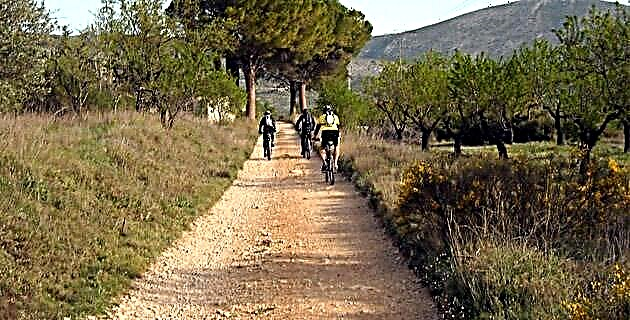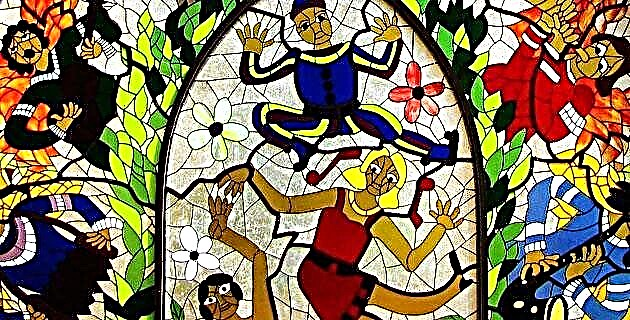
Interview with Enrique Canales Santos, Mexican painter born in Monterrey, Nuevo León on October 27, 1936 and died on June 19, 2007.
Since when do you remember your relationship with the devil and painting?
I was born in one of the ocher straw ashlar houses in the center of Monterrey, now the new Macroplaza. I recognized the devil as hot, it was the one that prompted me to eat the corners of the ashlar walls, which when wet tasted like fresh sweet earth. I always imagined that close to us we brought a guardian angel arguing with a tempting demon. The devil made him scratch the walls with crayon without rhyme or reason, until the great chief “Cejas”, my father, a brown bear man, covered the ashlars with mosaics of arabesque colors.
Your paintings are very loaded with materials, why is that?
I always lived close to the ground and was intrigued by the great variety of colors and textures: picking walnuts in Bustamante on smelly black purple earth, and anacuhuitas in Agualeguas on ocher almonds; crossing the Santa Catarina river with its infinite blue ball stones; looking for squares of quartz like cheese in the Bishopric. He considered jewels the colors fallen in the Mitras, he pepena five coins on the thousand textures of the sidewalks. Everything was felt with hands and eyes.
But where does the organic in your songs come from?
Each animal brought its textures and its colors: ladybugs in the geraniums, lizards in La Huasteca, caramels in the backyard, the striking blue-bodied centipede with its yellow legs, the burner worm with its shiny blacks and golds. Of each little animal I imagined the shape of its angels and the shape of its demons. The wings of the flies seemed to me the wings of angels or little demons. Of course the color of fresh blood running over dark dried blood is a spectacle of organic colors.
Was someone in your family a painter or artist?
Not that I know. I didn't have to follow in anyone's footsteps. I think I felt the first temptation of individual freedom around the age of twelve, when Dad told me that the Canals had not come from anywhere. We are neither complete Indians nor Spanish, in fact in my family some of us are white and others dark. Dad told me that the Canals had sprouted from the Agualeguas desert and that we had no commitment to anything or anyone. We should do our own thing. Dad taught me, or you learn to use you or they will use you. There was no other way, or we listen to our own angel or we listen to our own demon.
When did you start drawing or painting?
When I was thirteen I took my first drawing classes in a private home and made a beautiful semi-copied horse's head from a European painter. Everyone liked it. I was scared when several aunts of mine loved the mentioned horse; I didn't want to become a girl-pleaser. I had to surround all "beautiful" painting for twenty years and seek my freedom.
And your engineering and doctoral studies?
I enjoyed mechanical engineering as constructive, ingenious, exact, useful. True moving sculptures. The management of companies soon annoyed me, you are asked to be very cunning; intelligence is hardly asked of you, and when you want to suggest wisdom they get angry and leave you in Babia. So much cunning turns you into an animal: coyote, rat, rooster, eagle, cat, especially cat. My Ph.D. in innovation at the University of Houston took away my desire to seek inspiration; It also took away my fear of false demons and I stopped praying to false angels. I was interested in understanding science and technology, as they contain poisons and treasures. Now, well illustrated, without fear, I only cultivate demons and angels that are truly mine, from my stable, from my cathedral, from my landscape.
Have you lived outside the country?
Almost two years in Brazil; my angel and my demon woke up from a long Mexican dream in Brazil. Trips to Europe and the United States make you more Mexican because of the strong contrast, they force you to withdraw into yourself, but Brazil modifies what is Mexican for you, because it affirms you in your human values and also takes away the dogmatic and matachin that we have the Mexicans. In Brazil, even Alfonso Reyes was stripped of the Aztec that he fished in Mexico City. In Rio you are a knight based on flavors and smells. The Brazilian angels and demons that stirred each other at times, brought the colors of the samba schools, and suggested other windows to life.
Do you feel progress in painting?
More than moving forward, I think you summarize yourself more and more deeply. When I dared to keep a diary of my pictorial excursion, I felt that the words help to specify the elusive content of my painting. All good exterior paint is the result of a good interior fight. Every surface has color, texture, and shape. Every external surface reveals the forces of good and evil moving inside it. The devil is slippery, he escapes you when he attacks; sometimes the devil is chaos, sometimes dull order, sometimes evil prudence. In painting the angel represents the daring, the innovation, the courage to capture our spirit in the matter. In painting you don't advance, you cover.
What is the guide of your painting?
Guidance is the internal emotion of seeing yourself reflected in a part of the external material. I cannot see whole pictures, just as I cannot see whole people. It is the elements that stir up the most energy that catch my attention. Thus, suddenly I find pieces of paintings of my own or of others that contain veins of my truth.
Is painting rational?
You paint with everything; with your reason, with your emotion and with your body. To start painting is not to start arguing, or rationalizing; on the contrary, starting to paint is a ritual. For this you need a certain inner peace, a certain fundamental harmony; You need space, silence or controlled noises, materials, time and a mood.
Is your painting rather optimistic? Are you optimistic
I never paint with a bad vibe; I carefully cultivate my delicate optimism and if I don't bring, if I can't be content with myself and with life, I'd better not paint that afternoon, walk up the mountain or just clean brushes, fix papers, until the bad vibes pass. I just want to capture my enthusiasm, the inner god that we all bring inside, the owner of my angels and my demons. Singing is more difficult than crying, at least for me, I consider it more important because we have to encourage each other.
Do you paint to live or do you live to paint?
Life, although it does not last long, is immense, it is full of mysteries; logically it is bigger than art and art is bigger than any country.
They say that your painting is very Mexican, is it true?
I am Mexican by navel and I am very pleased and I do not need to make an effort to be one - it is more Mexican when you do what causes you, when you do what you are and you throw yourself with full confidence to translate yourself into your chores.
What has been your relationship with galleries and museums?
Starting in 1981, Arte Actual Mexicano de Monterrey supported me, then the Museum of Monterrey, Gallery of Mexican Art, Tamayo Museum, Fine Arts, Chapultepec Museum, José Luis Cuevas Museum; Quetzalli Gallery in Oaxaca, Marco de Monterrey and finally the Amparo Museum in Puebla, which has acquired a good collection of my works. I have exhibited in Paris, Bogotá and in various cities. I have good and bad reviews; I'm in the middle of a fight But my only concern is my next painting.
Who are you, what are you?
I don't know what I am, or who I am, but I know what I do, therefore I am a painter of pictures, stoneworker, I knead clay, I polish glass, I think full-color sonseras. Also, when I get tired of standing, I like to sit and write about painting, technology and political issues. But what I like the most are the females with the hair a bit matted.

